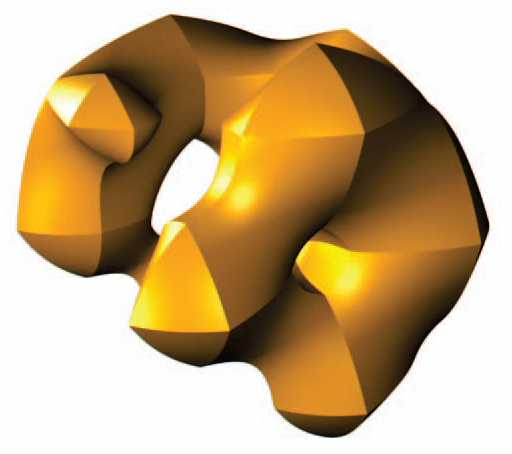SCI Publications
2014
T. Etiene, D. Jonsson, T. Ropinski, C. Scheidegger, J.L.D. Comba, L. G. Nonato, R. M. Kirby, A. Ynnerman,, C. T. Silva.
“Verifying Volume Rendering Using Discretization Error Analysis,” In IEEE TRANSACTIONS ON VISUALIZATION AND COMPUTER GRAPHICS, Vol. 20, No. 1, IEEE, pp. 140-154. January, 2014.
We propose an approach for verification of volume rendering correctness based on an analysis of the volume rendering integral, the basis of most DVR algorithms. With respect to the most common discretization of this continuous model (Riemann summation), we make assumptions about the impact of parameter changes on the rendered results and derive convergence curves describing the expected behavior. Specifically, we progressively refine the number of samples along the ray, the grid size, and the pixel size, and evaluate how the errors observed during refinement compare against the expected approximation errors. We derive the theoretical foundations of our verification approach, explain how to realize it in practice, and discuss its limitations. We also report the errors identified by our approach when applied to two publicly available volume rendering packages.
2011
M. Berger, J.A. Levine, L.G. Nonato, G. Taubin, C.T. Silva.
“An End-to-End Framework for Evaluating Surface Reconstruction,” SCI Technical Report, No. UUSCI-2011-001, SCI Institute, University of Utah, 2011.
H. Bhatia, S. Jadhav, P.-T. Bremer, G. Chen, J.A. Levine, L.G. Nonato, V. Pascucci.
“Edge Maps: Representing Flow with Bounded Error,” In Proceedings of IEEE Pacific Visualization Symposium 2011, Hong Kong, China, Note: Won Best Paper Award!, pp. 75--82. March, 2011.
DOI: 10.1109/PACIFICVIS.2011.5742375
H. Bhatia, S. Jadhav, P.-T. Bremer, G. Chen, J.A. Levine, L.G. Nonato, V. Pascucci.
“Flow Visualization with Quantified Spatial and Temporal Errors using Edge Maps,” In IEEE Transactions on Visualization and Computer Graphics (TVCG), Vol. 18, No. 9, IEEE Society, pp. 1383--1396. 2011.
DOI: 10.1109/TVCG.2011.265
A. Cuadros-Vargas, L.G. Nonato, V. Pascucci.
“Combinatorial Laplacian Image Cloning,” In Proceedings of XXIV Sibgrapi – Conference on Graphics, Patterns and Images, pp. 236--241. 2011.
DOI: 10.1109/SIBGRAPI.2011.7
Seamless image cloning has become one of the most important editing operation for photomontage. Recent coordinate-based methods have lessened considerably the computational cost of image cloning, thus enabling interactive applications. However, those techniques still bear severe limitations as to concavities and dynamic shape deformation. In this paper we present novel methodology for image cloning that turns out to be highly efficient in terms of computational times while still being more flexible than existing techniques. Our approach builds on combinatorial Laplacian and fast Cholesky factorization to ensure interactive image manipulation, handling holes, concavities, and dynamic deformations during the cloning process. The provided experimental results show that the proposed technique outperforms existing methods in requisites such as accuracy and flexibility.
T. Etiene, L.G. Nonato, C. Scheidegger, J. Tierny, T.J. Peters, V. Pascucci, R.M. Kirby, C.T. Silva.
“Topology Verfication for Isosurface Extraction,” In IEEE Transactions on Visualization and Computer Graphics, pp. (accepted). 2011.

S. Jadhav, H. Bhatia, P.-T. Bremer, J.A. Levine, L.G. Nonato, V. Pascucci.
“Consistent Approximation of Local Flow Behavior for 2D Vector Fields,” In Mathematics and Visualization, Springer, pp. 141--159. Nov, 2011.
DOI: 10.1007/978-3-642-23175-9 10

Typically, vector fields are stored as a set of sample vectors at discrete locations. Vector values at unsampled points are defined by interpolating some subset of the known sample values. In this work, we consider two-dimensional domains represented as triangular meshes with samples at all vertices, and vector values on the interior of each triangle are computed by piecewise linear interpolation.
Many of the commonly used techniques for studying properties of the vector field require integration techniques that are prone to inconsistent results. Analysis based on such inconsistent results may lead to incorrect conclusions about the data. For example, vector field visualization techniques integrate the paths of massless particles (streamlines) in the flow or advect a texture using line integral convolution (LIC). Techniques like computation of the topological skeleton of a vector field, require integrating separatrices, which are streamlines that asymptotically bound regions where the flow behaves differently. Since these integrations may lead to compound numerical errors, the computed streamlines may intersect, violating some of their fundamental properties such as being pairwise disjoint. Detecting these computational artifacts to allow further analysis to proceed normally remains a significant challenge.
2010
M. Berger, L.G. Nonato, V. Pascucci, C.T. Silva.
“Fiedler Trees for Multiscale Surface Analysis,” In Computer & Graphics, Vol. 34, No. 3, Note: Special Issue of Sha, pp. 272--281. June, 2010.
DOI: 10.1016/j.cag.2010.03.009
In this work we introduce a new hierarchical surface decomposition method for multiscale analysis of surface meshes. In contrast to other multiresolution methods, our approach relies on spectral properties of the surface to build a binary hierarchical decomposition. Namely, we utilize the first nontrivial eigenfunction of the Laplace–Beltrami operator to recursively decompose the surface. For this reason we coin our surface decomposition the Fiedler tree. Using the Fiedler tree ensures a number of attractive properties, including: mesh-independent decomposition, well-formed and nearly equi-areal surface patches, and noise robustness. We show how the evenly distributed patches can be exploited for generating multiresolution high quality uniform meshes. Additionally, our decomposition permits a natural means for carrying out wavelet methods, resulting in an intuitive method for producing feature-sensitive meshes at multiple scales.
J. Daniels, E.W. Anderson, L.G. Nonato, C.T. Silva.
“Interactive Vector Field Feature Identification,” In IEEE Transactions on Visualization and Computer Graphics, Proceedings of the 2010 IEEE Visualization Conference, Vol. 16, No. 6, pp. 1560--1568. 2010.
DOI: 10.1109/TVCG.2010.170
PubMed ID: 20975198
T. Etiene, L.G. Nonato, C.E. Scheidegger, J. Tierny, T.J. Peters, V. Pascucci, R.M. Kirby, C.T. Silva.
“Topology Verification for Isosurface Extraction,” SCI Technical Report, No. UUSCI-2010-003, SCI Institute, University of Utah, 2010.
S. Jadhav, H. Bhatia, P.-T. Bremer, J.A. Levine, L.G. Nonato, V. Pascucci.
“Consistent Approximation of Local Flow Behavior for 2D Vector Fields using Edge Maps,” SCI Technical Report, No. UUSCI-2010-004, SCI Institute, University of Utah, 2010.
M.A.S. Lizier, M.F. Siqueira, J.D. Daniels II, C.T. Silva, L.G. Nonato.
“Template-based Remeshing for Image Decomposition,” In Proceedings of the 23rd SIBGRAPI Conference on Graphics, Patterns and Images, pp. 95--102. 2010.
F.V. Paulovich, C.T. Silva, L.G. Nonato.
“Two-Phase Mapping for Projecting Massive Data Sets,” In IEEE Transactions on Visualization and Computer Graphics (TVCG), In IEEE Tr, Vol. 16, No. 6, pp. 1281--1290. Nov, 2010.
DOI: 10.1109/TVCG.2010.207
Most multidimensional projection techniques rely on distance (dissimilarity) information between data instances to embed high-dimensional data into a visual space. When data are endowed with Cartesian coordinates, an extra computational effort is necessary to compute the needed distances, making multidimensional projection prohibitive in applications dealing with interactivity and massive data. The novel multidimensional projection technique proposed in this work, called Part-Linear Multidimensional Projection (PLMP), has been tailored to handle multivariate data represented in Cartesian high-dimensional spaces, requiring only distance information between pairs of representative samples. This characteristic renders PLMP faster than previous methods when processing large data sets while still being competitive in terms of precision. Moreover, knowing the range of variation for data instances in the high-dimensional space, we can make PLMP a truly streaming data projection technique, a trait absent in previous methods.
C.E. Scheidegger, T. Etiene, L.G. Nonato, C.T. Silva.
“Edge Flows: Stratified Morse Theory for Simple, Correct Isosurface Extraction,” SCI Technical Report, No. UUSCI-2010-002, SCI Institute, University of Utah, 2010.
J. Tierny, J. Daniels II, L.G. Nonato, V. Pascucci, C.T. Silva.
“Interactive Quadrangulation with Reeb Atlases and Connectivity Textures,” SCI Technical Report, No. UUSCI-2010-006, SCI Institute, University of Utah, 2010.
C. Tuttle, L.G. Nonato, C.T. Silva.
“PedVis: A Structured, Space-Efficient Technique for Pedigree Visualization,” In IEEE Transactions on Visualization and Computer Graphics (TVCG), Vol. 16, No. 6, pp. 1063--1072. Nov, 2010.
DOI: 10.1109/TVCG.2010.185
Public genealogical databases are becoming increasingly populated with historical data and records of the current population's ancestors. As this increasing amount of available information is used to link individuals to their ancestors, the resulting trees become deeper and more dense, which justifies the need for using organized, space-efficient layouts to display the data. Existing layouts are often only able to show a small subset of the data at a time. As a result, it is easy to become lost when navigating through the data or to lose sight of the overall tree structure. On the contrary, leaving space for unknown ancestors allows one to better understand the tree's structure, but leaving this space becomes expensive and allows fewer generations to be displayed at a time. In this work, we propose that the H-tree based layout be used in genealogical software to display ancestral trees. We will show that this layout presents an increase in the number of displayable generations, provides a nicely arranged, symmetrical, intuitive and organized fractal structure, increases the user's ability to understand and navigate through the data, and accounts for the visualization requirements necessary for displaying such trees. Finally, user-study results indicate potential for user acceptance of the new layout.
2009
T. Etiene, C.E. Scheidegger, L.G. Nonato, R. Kirby, C.T. Silva.
“Verifiable Visualization for Isosurface Extraction,” In IEEE Transactions on Visualization and Computer Graphics, Proceedings of the 2009 IEEE Visualization Conference, Vol. 15, No. 6, pp. 1227--1234. Sept/Oct, 2009.
2008
M. Lizier, J.F. Shepherd, L.G. Nonato, J. Comba, C.T. Silva.
“Comparing Techniques for Tetrahedral Mesh Generation,” In Proceedings of the Inaugural International Conference of the Engineering Mechanics Institute (EM 2008), pp. (accepted). 2008.
